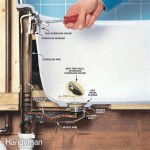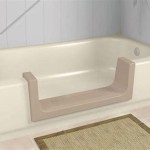Do I Need a Permit to Change a Bathtub?
Embarking on a bathroom renovation project, particularly one involving replacing a bathtub, often necessitates careful consideration of local regulations. The question of whether a permit is required is not a universal "yes" or "no." It varies significantly depending on geographic location, the nature of the work being performed, and the specific requirements of the local governing bodies. Undertaking such a project without proper authorization can lead to fines, delays, and even the requirement to undo completed work. Therefore, understanding the permitting process and determining its applicability to a bathtub replacement is a crucial first step.
The need for a permit typically stems from the desire to ensure that construction and renovation work adhere to established safety and building codes. These codes are designed to protect public health and safety by regulating aspects such as structural integrity, plumbing, electrical systems, and accessibility. When a bathtub replacement involves alterations to these elements, a permit is frequently required.
Failing to obtain a necessary permit can have several adverse consequences. Local authorities may issue stop-work orders, halting the project until the proper permits are secured. Fines and penalties can also be levied for non-compliance. Furthermore, unpermitted work can create problems during future property sales, as potential buyers or their inspectors might uncover code violations that need to be rectified before the sale can proceed. Insurance companies may also deny claims related to damage or accidents resulting from unpermitted work. Therefore, due diligence in determining permit requirements is essential to avoid these potential pitfalls.
Understanding Why Permits Are Required for Bathtub Replacements
The primary reason why a permit might be required for a bathtub replacement lies in the potential involvement of plumbing alterations. Bathtubs are connected to the water supply and drainage systems of a building. Altering these connections, even seemingly minor adjustments, can impact the integrity of the plumbing system and potentially violate local plumbing codes. These codes are in place to prevent leaks, ensure proper drainage, and protect the water supply from contamination.
Specifically, any modification to the water supply lines, such as changing the location of the faucet or adding a new shower fixture, is likely to necessitate a permit. Adjustments to the drainpipe, including relocating the drain or altering the pipe diameter, also typically trigger permit requirements. These modifications could affect the flow of water and waste, potentially leading to backups, leaks, or other plumbing problems.
Beyond plumbing, electrical considerations can also contribute to the need for a permit. If the bathtub replacement involves any electrical work, such as installing a new electrical outlet for a whirlpool tub or relocating existing wiring, a permit is almost certainly required. Electrical codes are in place to prevent electrical shocks and fires, and any electrical work needs to be performed by a qualified electrician in accordance with these codes.
Structural modifications are another potential trigger for permit requirements. If the bathtub replacement involves altering the framing of the bathroom floor or walls to accommodate a new tub, a permit is likely to be necessary. Structural alterations can impact the stability and safety of the building, and local building codes regulate these types of changes to ensure structural integrity.
Finally, changes that affect accessibility can require permits. If the bathtub replacement involves installing a walk-in tub or making other modifications to improve accessibility for individuals with disabilities, specific accessibility codes might apply. These codes, often based on the Americans with Disabilities Act (ADA), dictate minimum standards for accessibility features, and compliance is often verified through the permitting process.
Factors That Influence Permit Requirements
Several factors can influence whether a permit is required for a specific bathtub replacement project. The most important factor is the jurisdiction in which the work is being performed. Permit requirements vary widely from city to city, county to county, and even within different neighborhoods of the same city. Therefore, it is essential to research the specific requirements of the local building department or permitting office.
The scope of the work being performed is another critical factor. A simple bathtub replacement, where the new tub is the same size and shape as the old one and no plumbing or electrical alterations are made, might not require a permit in some jurisdictions. However, a more complex project involving plumbing modifications, electrical work, or structural alterations is much more likely to require a permit.
The type of bathtub being installed can also influence permit requirements. For example, installing a standard bathtub might not require a permit, while installing a whirlpool tub or a walk-in tub could trigger permit requirements due to the additional plumbing and electrical connections involved. Specifically, whirlpool tubs often require dedicated electrical circuits and ground fault circuit interrupters (GFCIs), which necessitate inspection and approval.
The age of the building can also play a role. Older buildings may be subject to different building codes than newer buildings, which could affect permit requirements. Furthermore, historical districts often have stricter regulations regarding renovations and modifications, which can increase the likelihood of needing a permit.
Finally, the presence of hazardous materials, such as asbestos, can affect permit requirements. If the bathtub replacement involves disturbing materials that might contain asbestos, specific permits and procedures for asbestos abatement may be required. These regulations are in place to protect workers and residents from the dangers of asbestos exposure.
How to Determine if a Permit is Needed
Determining whether a permit is needed for a bathtub replacement project requires a proactive approach and direct engagement with local authorities. The first step is to contact the local building department or permitting office. Most jurisdictions have websites that provide information on permit requirements, but it is often helpful to speak directly with a building official to clarify specific questions and concerns.
When contacting the building department, it is important to provide a detailed description of the scope of the work being performed. This should include information about the type of bathtub being installed, any plumbing or electrical modifications being made, and any structural alterations being undertaken. The more information provided, the more accurate the assessment of permit requirements will be.
It is also important to inquire about the specific codes and regulations that apply to the project. This will help ensure that the work is performed in compliance with all applicable standards. Some jurisdictions may have specific guidelines for bathtub replacements, while others may rely on general plumbing, electrical, and building codes.
If the building department indicates that a permit is required, it is important to obtain the necessary application forms and instructions. The application process typically involves submitting detailed plans and specifications for the work being performed. These plans may need to be prepared by a licensed architect or engineer, depending on the complexity of the project.
Once the application is submitted, it will be reviewed by the building department to ensure that it complies with all applicable codes and regulations. This review process can take several weeks or even months, depending on the workload of the building department. If the application is approved, a permit will be issued, allowing the work to proceed.
During the course of the project, building inspectors may visit the site to ensure that the work is being performed in accordance with the permit and the applicable codes. These inspections are an important part of the permitting process, as they help to ensure that the work is safe and compliant. It is important to cooperate with building inspectors and address any concerns they may have promptly.
It is also possible to hire a licensed contractor to handle the permitting process. Contractors often have experience with local building codes and permit requirements, and they can navigate the process more efficiently than homeowners. Hiring a contractor can save time and effort, and it can also help ensure that the work is performed correctly and in compliance with all applicable regulations.
In summary, determining whether a permit is needed to change a bathtub requires contacting the local building department or permitting office, providing a detailed description of the work being performed, and inquiring about applicable codes and regulations. Following this process will help ensure that the project is completed safely, legally, and in compliance with all applicable standards.

Do You Need A Permit To Replace Bathtub Bathwraps

Do You Need Permits To Remodel A Bathroom Sweeten Com

Do You Need Permits For Bathroom Remodel What To Know In 2024 Badeloft

Do I Need A Permit To Remodel My Bathroom In Atlanta

Permits For Bathroom Remodeling Projects Complete Guide

Why Do I Need A Permit For My Bathroom Project One Week Bath

Do I Need A Permit To Renovate My Bathroom In Burnaby Vancouver

Permits For Bathroom Remodeling Projects Complete Guide

I M Remodeling My Bathroom Do Need A Permit

Do I Need A Permit To Remodel My Bathroom In Sacramento All You Know America S Advantage Remodeling








